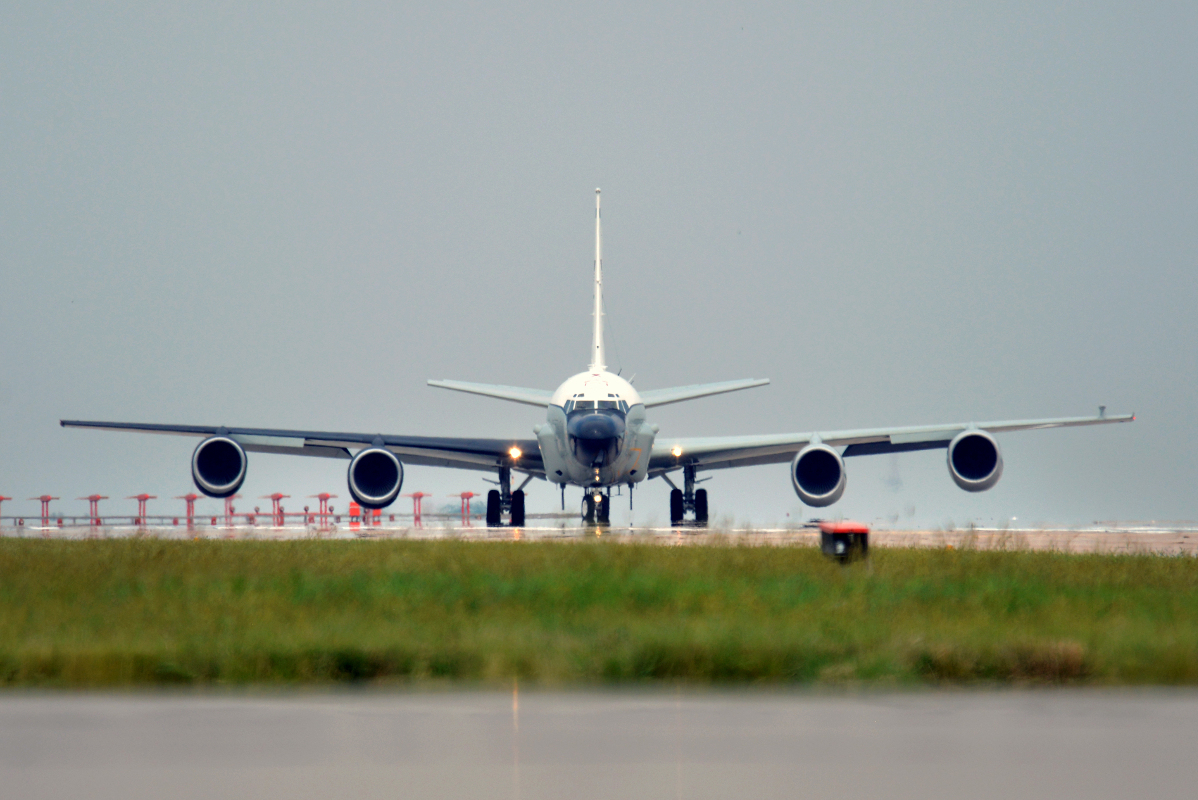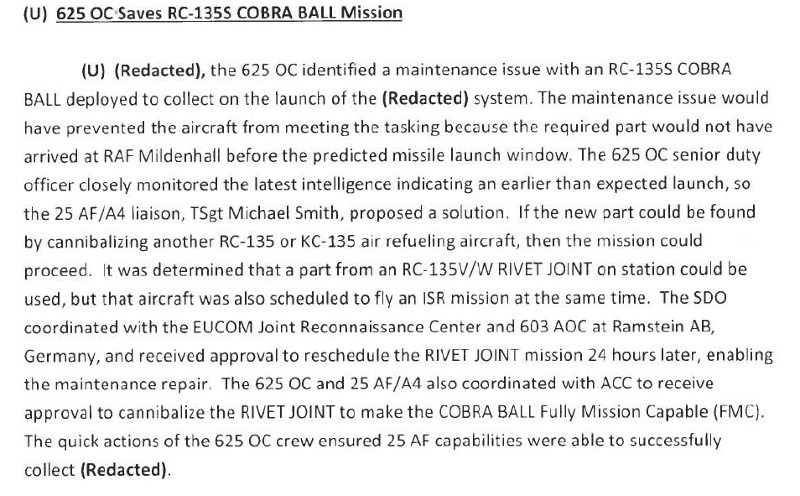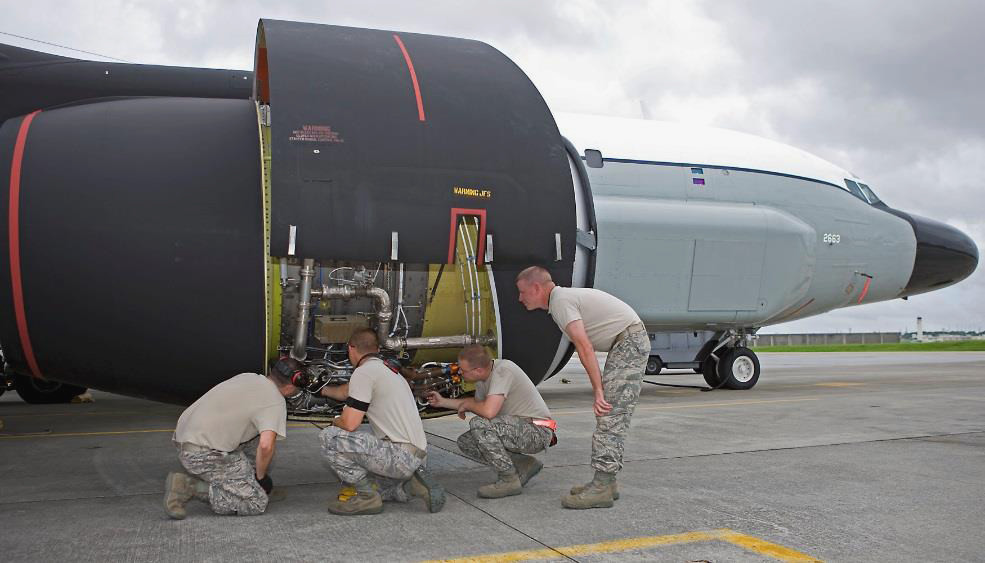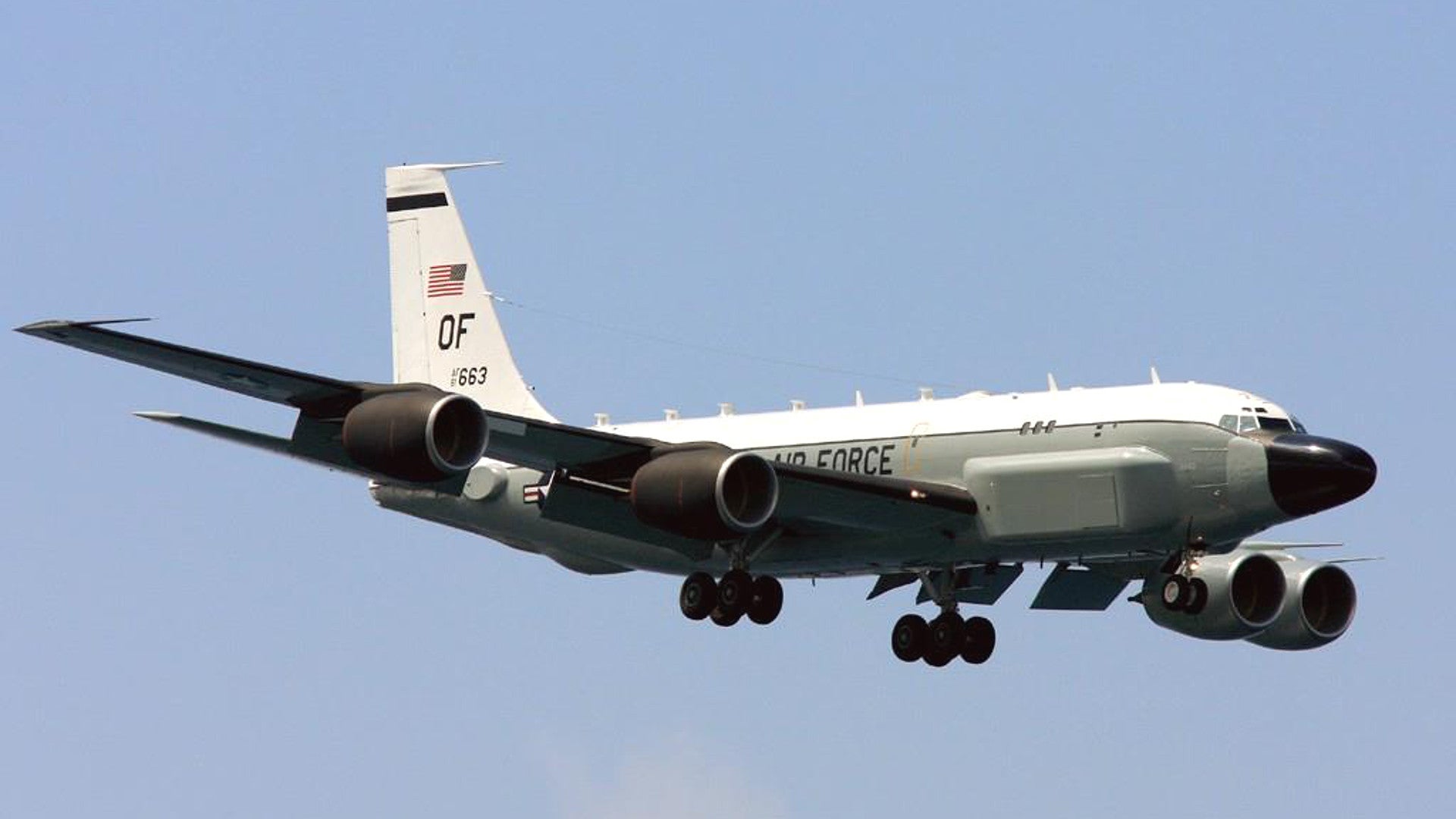It’s no secret that the U.S. Air Force’s aging, but vital RC-135 spy planes have been breaking down at an increasingly a worrisome rate for years now, often forcing the cancellation of important missions. Now, information from a declassified official unit history provides an especially clear example of how these problems can have cascading impacts on operational readiness and put the U.S. military’s ability to gather critical intelligence at risk when it matters most.
In 2016, one of the Air Force’s three RC-135S Cobra Ball aircraft suffered an unspecified maintenance issue while deployed to RAF Mildenhall in the United Kingdom. This would have rendered it unable to perform its scheduled mission, which was to collect information on the launch of an unknown ballistic missile system. The Cobra Ball aircraft have specialized equipment to track these types of weapons and gather telemetry and other electronic intelligence data, as well as visual imagery on them and their test flight operations.
“The required part would not have arrived at RAF Mildenhall before the predicted missile launch window,” the 2016 history for the 25th Air Force, the Air Force’s top intelligence, surveillance, and reconnaissance unit, explained. “If the new part could be found by cannibalizing another RC-135 or KC-135 air refueling aircraft, then the mission could proceed.”
We at The War Zone obtained this document via the Freedom of Information Act. Censors redacted the exact date of the incident, the target of the RC-135S’ mission, and what intelligence the crew was ultimately able to collect.

What we do know is that the Cobra Ball was able to fly its mission, in the end, thanks to some quick thinking on the part of U.S. Air Force Technical Sergeant Michael Smith, a liaison from the 25th Air Force’s Logistics Division. He was the one who the history credits with suggesting that maintenance crews take the necessary parts from another C-135-based aircraft to get the RC-135S flying again.
In the end, Air Force officials agreed to have personnel strip the required components out of an RC-135V/W Rivet Joint signals intelligence aircraft that was also at Mildenhall at the time. We don’t know whether or not maintenance personnel swapped the parts back after the RC-135S returned to base.
The internal history does make it clear that the 25th Air Force was very proud of how its airmen handled this incident. The specific section is titled “625 OC [Operations Center] Saves RC-13SS Cobra Ball Mission.”

But, while it clearly allowed the Air Force to gather significant information on a rocket or missile launch, the entire incident highlights the challenges and tough decisions that the sorry state of the RC-135 fleet imposes on the service. In 2016 alone, the 55th Wing as a whole had to abort more than 500 missions due to maintenance issues, according to an investigative series the Omaha World Herald published in June 2018. This unit oversees the Cobra Balls and Rivet Joints, as well as the RC-135U Combat Sent electronic intelligence platforms, OC-135B Open Skies surveillance aircraft, and WC-135W Constant Phoenix nuclear intelligence planes.
The RC-135V/W that sacrificed its mission readiness to so the RC-135S could fly its sortie had been scheduled to perform a flight of its own that day. That got pushed back 24 hours as a result of the need to get the Cobra Ball airborne.
There’s no way of telling what intelligence the Rivet Joint might have missed by not flying its scheduled mission. Operating from bases in Europe, these aircraft typically monitor Russia’s heavily militarized Kaliningrad enclave on the Baltic Sea and other parts of NATO’s eastern flank.
RC-135V/Ws deployed to Mildenhall often fly further on to Naval Support Activity Souda Bay on the Greek island of Crete, where they fly important missions in the Black Sea, monitoring Russia’s activities in and around Ukraine’s Crimea region, and the Eastern Mediterranean, often operating off the coast of Syria. A Rivet Joint flying from Greece helped gather information on air defenses in Syria ahead of a U.S.-led cruise missile barrage against Syrian dictator Bashar Al Assad’s chemical weapons infrastructure in April 2018.
These missions are often critical and time sensitive. The scramble to get the RC-135S up in the air in 2016 was itself driven by new intelligence that indicated the target’s launch time had gotten pushed up. The low availability rates within the small RC-135 fleet make it hard to ensure the jets are ready to respond to these kinds of changes on short notice to begin with.
It’s also important to note that while cannibalization is rife across the U.S. military’s aviation communities that doesn’t mean it’s necessarily a sustainable practice. The potential pitfalls are magnified when dealing with low density, high-value assets such as the RC-135S aircraft. The plan worked in 2016, but the Air Force simply can’t rely on there always being another aircraft on hand to strip of necessary parts. Even if there is, there is no guarantee that maintenance personnel will be able to have a broken plane ready exactly when it’s needed.

Collection demands, especially when it comes to rocket and missile launches, are only likely to have increased since 2016, as well. Even when they’re all working fine, the three Cobra Balls have to contend with the U.S. governments desire to monitor an increasing number of Russian, Chinese, North Korean, and Iranian ballistic missile developments and contend with the growing proliferation of such systems elsewhere. In the past, Cobra Balls have even flown missions to monitor American allies and partners, such as India, Israel, and Pakistan, as they conducted their own missile launches.
It’s not clear when the state of the RC-135 fleet, in part or as a whole, might improve, but Air Force has been under increasing pressure from Congress to take action to rectify low availability rates and other readiness issues across the service. A spate of serious and often fatal aircraft accidents in 2018 has also been driving demands from legislators and the general public for the service to do some critical introspection into how it operates. Lawmakers did include more than $600 million specifically to support the 55th Wing’s C-135-based aircraft in the most recent defense budget for the 2019 Fiscal year, as well.
At the same time, the Air Force also has no firm plan about how it would go about actually replacing the RC-135s. The service expects to keep the planes flying through at least 2050.
In the meantime, the 55th Wing may well have to continue swapping parts between RC-135s to at least try to ensure they meet the highest priority collection requirements.
Contact the author: jtrevithickpr@gmail.com
